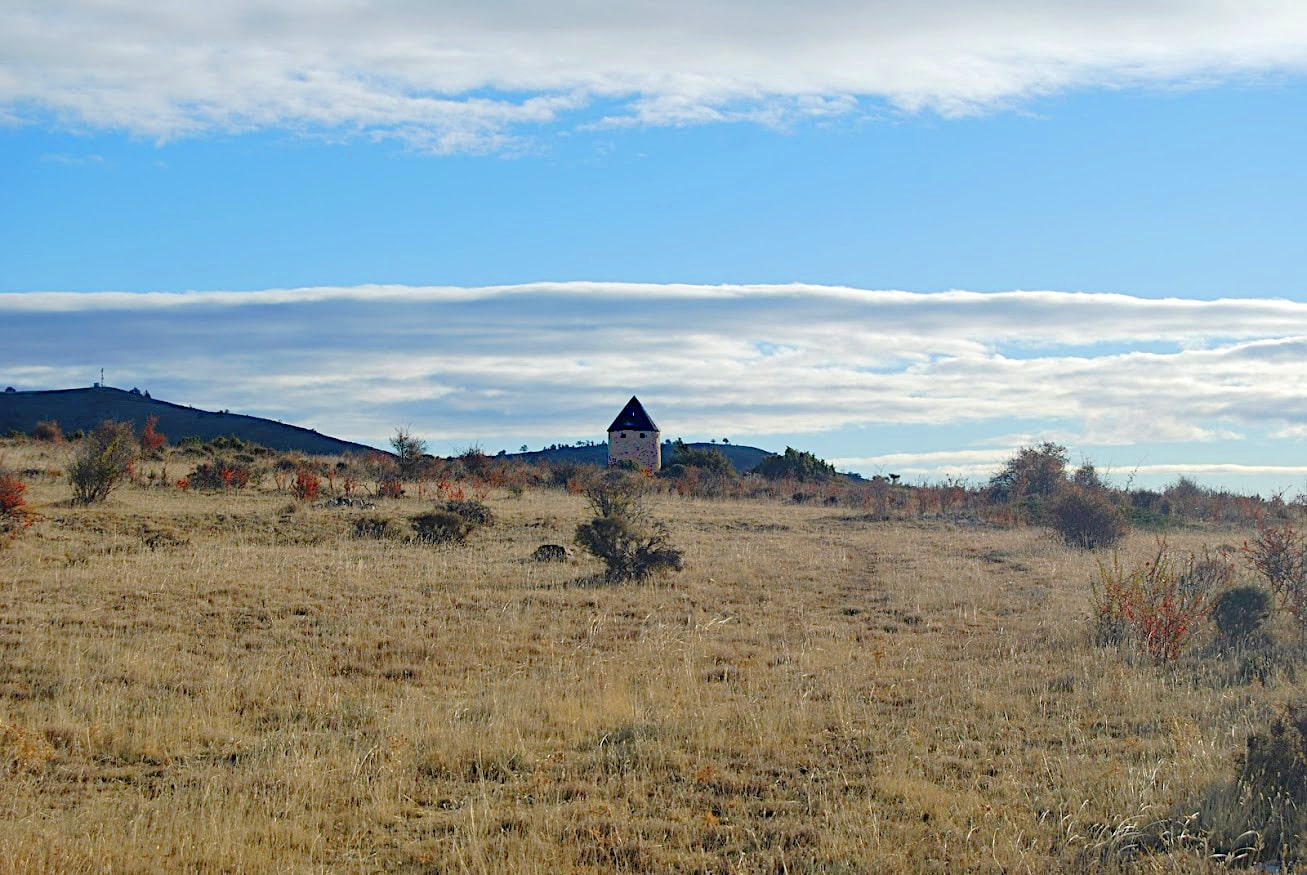Alustante Mill
The only windmill in the Upper Tagus

Dirección
Between Alustante and Alcoroches
GPS
40.614462803294, -1.6679370586172
Alustante Mill
It is not known at present when it was built. Alustante windmillThere is no documentation proving its age before the second half of the 19th century.
The first news documentation on this building comes from the Gazetteer of 1860. According to an oral tradition, which dates back to the 1870s, the mill was close to an area of pine forest and the users took advantage of the trips to the mill to collect firewood. A few years later, in 1886, the Nomenclature of the Bishopric of Sigüenza, states that in Alustante "there is a windmill, which does not work".
How long it remained standing is another of the unknowns of the building. Another tradition says that the blades burnt down in the harsh February of 1917, so it is to be assumed that it could have remained with its hood, blades and machinery shortly before.
<< The mill: ruin and reconstruction
In a general view of the village by photographer Camarillo in 1934, the ruin of the mill is already recognisable. For years it retained two side walls, having collapsed just where it had the doors, one facing east and the other west. If the blades were working at one door, the other could be used.
It also conserved the holes in the walls where the stairs and floor slabs rested and a channel covered with lead to lower the flour, possibly hidden. It also conserved a kind of firebox with a smoke outlet to the outside and the remains of the bollega and rebound stones on which the shaft of the blades was placed.
In 1991 there was a first request from the City Council to declare this building an Asset of Cultural Interest (BIC), but it was in December 2005 when it was possible to document that it was over 100 years old, which was essential for it to be considered as such. Once the declaration of BIC was obtained, the Regional Ministry of Culture of Castilla-La Mancha began to study the possibilities of rehabilitating the building.
In October 2006, work began on the dismantling of the roof built in 1995 to protect the building, and a year later the walls were raised and windows were built. All the village's masonry teams were involved in this work. The carpentry work began in April 2008. In July 2008, the hood and blades were installed, and between 2011 and 2012 the process of installing the machinery was completed.

<< Typology
It is very difficult to establish a typological ascription of the mill given the limited material data available on its original appearance. For the time being, we must say that it is a tower mill, like all those that have survived in the Iberian Mountains and Aragon, structured in two sections that stand on a base.
Nor should we rule out the possibility that they are related to the mills of La Mancha. Bearing in mind the existence of temporary migrations to the south by many of the villagers, this type of artefact was not unknown to the inhabitants of these mountains in the past.
Nevertheless, it is known that windmills existed in the Señorío de Molina in Tartanedo (16th century) and in La Yunta. Also nearby are the mills of Ojos Negros (Comarca del Jiloca) and, although in ruins, that of Jabaloyas (Sierra de Albarracín).
<< How to get there?
It is located on the outskirts of Alustante address AlcorochesIt is located on a small hill and next to a Navajo, so it is very easy to find it. We can get there by taking a comfortable walk from the village itself or with our vehicle from the road itself, as there is a detour for this purpose.


